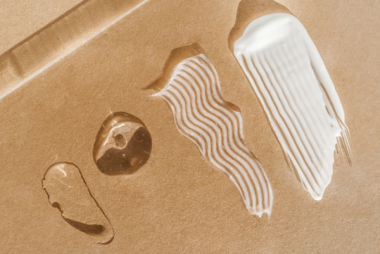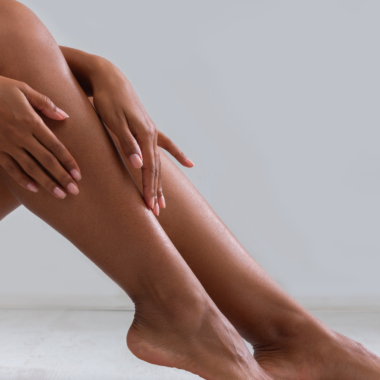Ever noticed your skin feels different when you’re on a plane? Or maybe you’ve felt your skin’s moisture levels change during specific seasons? If this sounds familiar, chances are you’ve experienced firsthand how your skin responds to varying humidity levels. But how exactly does humidity affect the skin?
Humidity refers to the amount of moisture in the air; hence, high humidity means more moisture in the air, which can help keep the skin hydrated and reduce dryness. However, for those with oily or combination skin, high humidity can be a real hassle. It’s frustrating enough dealing with oily skin, so you can imagine how much worse it gets when increased moisture in the air makes the skin produce even more oil, leading to more clogged pores and breakouts.
Thankfully, there is a simple fix to avoid this: customizing your skincare routine and products to suit your skin type and the humid conditions. In this article, we’ll explore the ultimate skincare routine and some oily skin tips to use in humid weather.
Oily Skin and High Humidity
The effect of humidity depends on your skin type. As we’ve seen, the increased moisture in humid conditions can help hydrate the skin and make it feel softer and more nourished compared to drier climates.
Beyond hydration, high moisture levels also promote skin cell turnover and shedding of dead skin cells. Typically, adequate hydration triggers the skin’s natural regeneration process, so a high humid climate can help regularly shed dead skin cells, exposing a smoother look and texture. High humidity also plays a crucial part in addressing aging signs by providing the skin with enough moisture to appear more lush and youthful.
However, a high moisture level in the air isn’t all good for people with oily skin. For one, high humidity can trigger higher sebum production and trap excess moisture in oily skin. While sebum is undoubtedly crucial for healthy skin, too much of it leaves the skin feeling greasy, oily, and clogged, resulting in acne, blackheads, and whiteheads. Plus, bacteria tend to thrive in humid conditions which can also increase the risk of breakouts.
These effects highlight the need to integrate an oily skin routine for healthier, more radiant skin in humid climates.
The Ultimate Oily Skin Routine in Humid Climates
If your skin produces excess oil, the solution is to reduce oil production by drying out the skin, right? Well, not exactly. The key to managing oily skin in humid weather is to follow a gentle yet effective skincare regimen tailored to regulate oil production, limit breakouts, and maintain a balanced complexion. Considering all these requirements, we’ve created the ultimate skincare routine for managing oily skin in humid weather.
Step 1: Wash your Face
Bacteria thrive in humid conditions, and when they build up in the face, they can increase the risk of breakout. As such, the first step in your oily skin routine should involve washing your face at least twice daily or more if you engage in any strenuous activity that makes you sweat. Consider a gentle face wash like the Neutrogena Oil-Free Acne Face Wash Cream Cleanser or Cetaphil’s Oil Removing Foam Wash.
It’s also important to always remove makeup at the end of the day to prevent clogged pores. Some effective products for this process include La Roche-Posay Effaclar Purifying Foaming Gel Cleanser and Cetaphil Gentle Makeup-Removing Wipes. Ultimately, the key to managing oily skin is to keep the natural oils in balance; hence, it’s important not to overwash the face or use harsh face wipes.
Step 2: Cleansing
Dermatologists and beauty experts recommend using a cleanser twice a day, in the morning and night. Obviously, you may feel like cleansing when your skin feels very oily during the day, but anything more than twice is unnecessary and, in some cases, dangerous, as it can strip your skin of essential moisture.
Go for a gentle cleanser specially formulated for oily and acne-prone skin. Cleansers like the CeraVe SA Smoothing Cleanser contain salicylic acid that can help control the skin’s natural oil production and limit breakouts.
Step 3: Exfoliating
Exfoliating regularly, about twice a week, helps to unclog pores and remove dead skin cells, which tend to accumulate more in high humidity due to extra sebum production. This routine also helps to prevent buildups that cause breakouts.
When exfoliating oily skin, opt for chemical exfoliants that contain ingredients like glycolic or salicylic acid. These exfoliants easily penetrate pores, making them effective in dissolving oil and debris without overstimulating the oil glands.
Some of the best chemical exfoliants include the Paula’s Choice Skin Perfecting 2% BHA Liquid Exfoliant and e.l.f. Cosmetics Holy Hydration! Exfoliant. That said, try not to over-exfoliate, as it could cause red, irritated skin.
Step 4: Toning
Toners are also a great addition to your skincare for humid weather. They help to unclog pores and remove any buildup that cleansers might have missed. However, their primary goal is to balance the skin’s pH level and lock in moisture, making it perfect for people who tend to use harsh cleansers or over-exfoliate.
Introduce a gentle, alcohol-free toner to rebalance the skin’s pH levels after cleansing and exfoliating. Some of the best toners for oily skin include ingredients like witch hazel or niacinamide to control oil production while also helping to soothe and refine the skin. We recommend Paula’s Choice Skin Balancing Pore-Reducing Toner or Murad Clarifying Toner.
Step 5: Moisturizing
Despite high humidity increasing moisture levels in the air, the skin needs a healthy dose of moisturization to maintain a healthy balance. Like other products on the list, the best moisturizers should be oil-free and non-comedogenic, as they are capable of hydrating the skin without clogging pores.
Ingredients like hyaluronic acid can help maintain moisture levels without adding excess oil. Some top moisturizers with hyaluronic acid include CeraVe Daily Moisturizing Lotion and the Neutrogena Hydro Boost Hyaluronic Acid Face Moisturizer.
Step 6: Sun Protection
It doesn’t really matter if the weather is cold, hot, windy, or humid; you always need SPF protection. That said, it becomes a lot more practical to apply sunscreen in humid conditions when the sun is at its fullest, and there’s hardly anything blocking the sunlight and rays from affecting your skin.
There are a range of sunscreens to choose from; however, whichever you choose should provide comprehensive protection against UVA and UVB rays. Ideally, products with at least SPF 30 can shield you from all harmful ultraviolet radiation.
Further Tips for Managing Oily Skin
Alongside prioritizing structured skincare for humid weather, there are some other best practices to keep in mind when managing oily skin in humid climates. For one, every product you include in your routine should be oil-free and non-comedogenic. As your skin becomes oilier in the summer, it’s best to avoid heavy, emollient-based skincare products to maintain healthier skin.
Controlling oily skin in humid weather also goes beyond the products you apply; your diet matters, too. For instance, a high-fat diet could increase sebum production and cause issues for the skin. Hence, folks with oily skin should include antioxidant-rich foods like fresh fruits, oats, and vegetables in their diet.
Another great tip for maintaining healthy skin is staying hydrated. When you take in lots of water, your skin becomes more elastic, which can help combat aging signs. Hydration is even more crucial in humid climates, where the body tends to lose more water from heat. While moisturizers are important, always look to hydrate from within as well.
Finally, try as much as possible to avoid touching your face. While this may seem harmless and natural, touching your face can transfer dirt, oil, germs, and bacteria to the skin and cause damage. So always wash your hands and keep them from your face to maintain healthy skin.
There you go, useful oily skin tips to use in humid weather. With an effective oily skin routine, gentle products, and a few lifestyle changes, you need not worry about humidity messing up your skin.
That said, it’s important to remember that every skin is different, so while some people may see great results from these steps and products, others may not find them as effective. If you’re dealing with serious conditions, we recommend getting assistance from a dermatologist to make personalized routines.
Resources
Our Top 5 Tips: The Best Skincare for Humid Weather (noblepanacea.com)
Skincare Routine for Oily Skin this Summer | Clinikally
The Ultimate Skincare Routine For Oily Skin | Simple Skincare
Is Humidity Good For Skin? – Asarch Dermatology (asarchcenter.com)
Oily Skin Care Routine: The Ultimate Industry Expert Guide 2024 (revieraoverseas.com)
How To Take Care of Oily Skin in Humid Weather | Cetaphil US

















